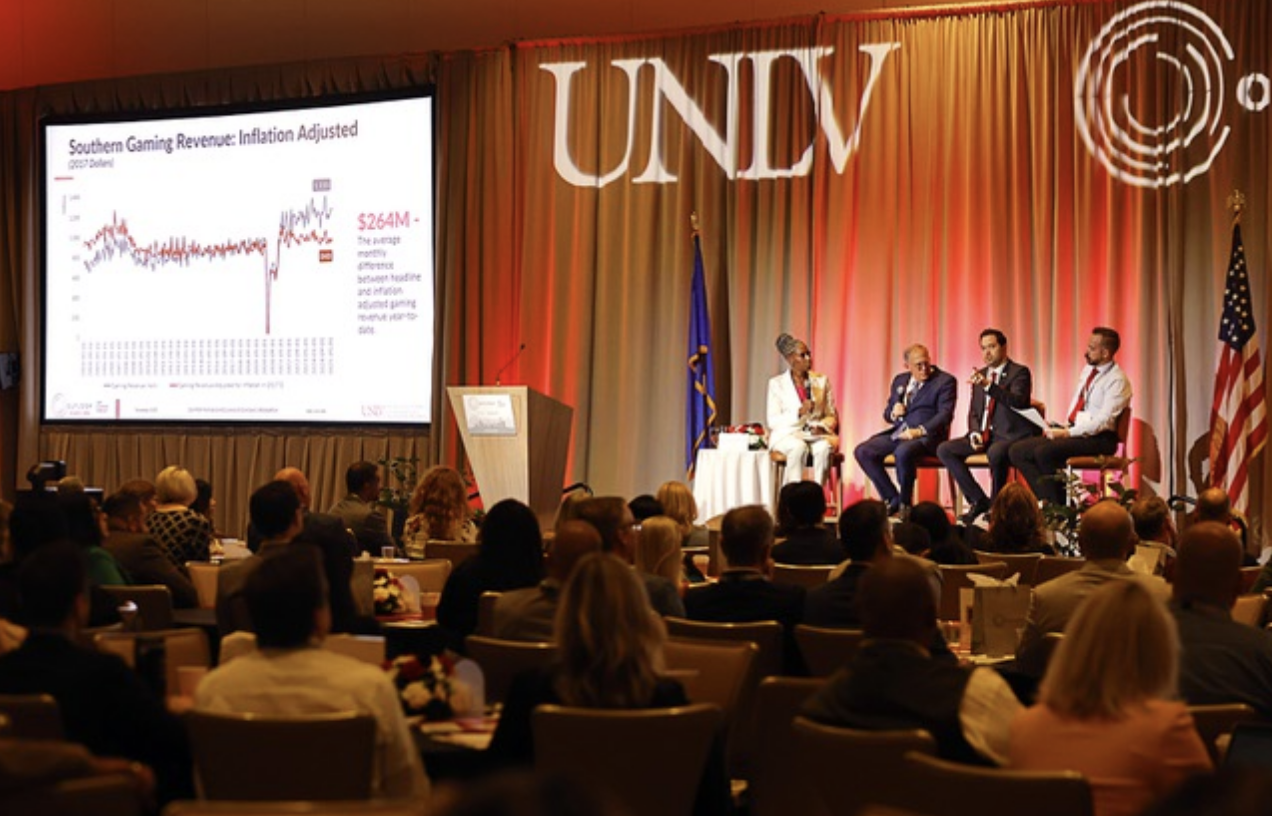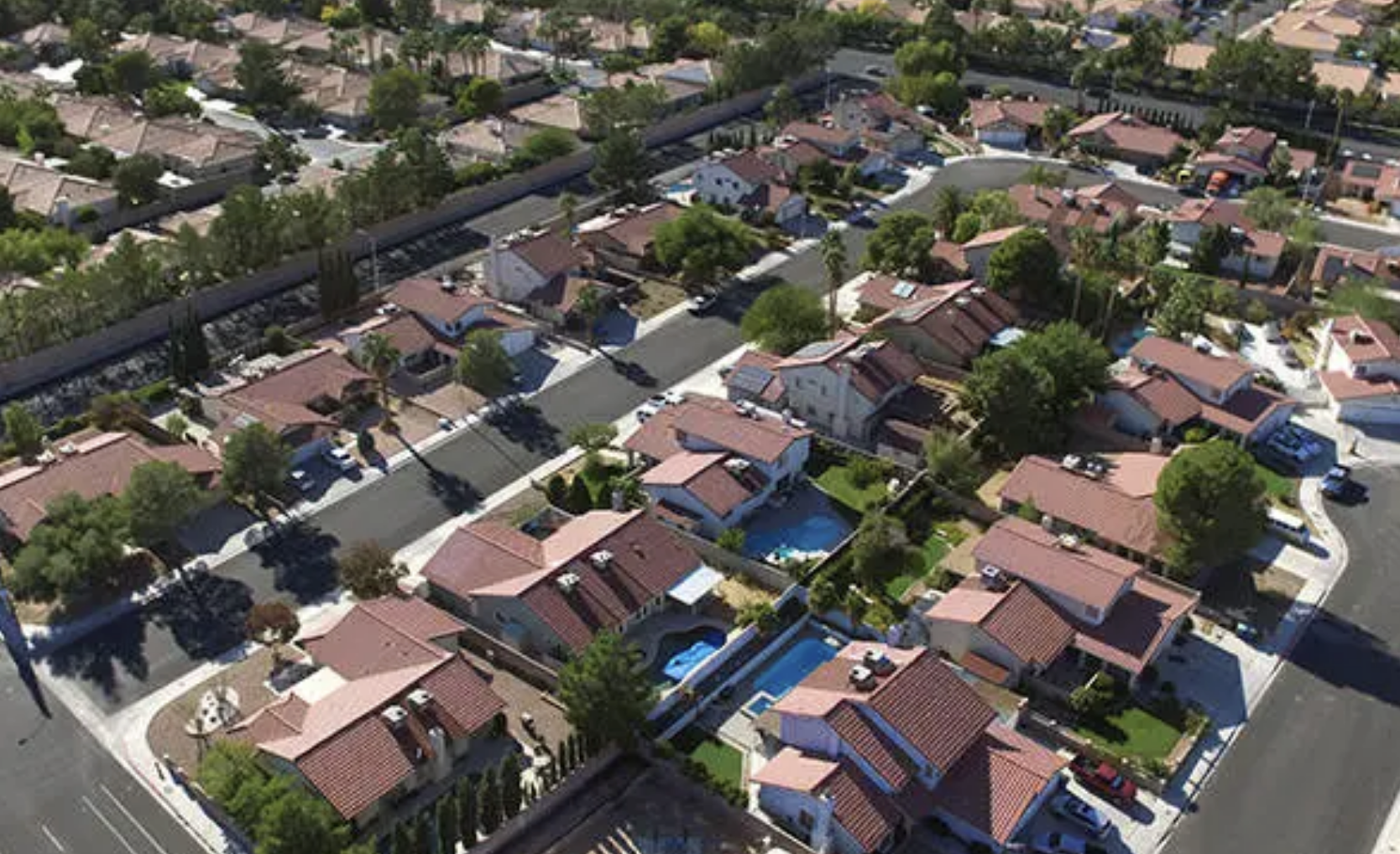UNLV’s Center for Business and Economic Research hosted its Outlook 2025 event at Durango Casino and Resort on Thursday, Nov. 13, 2025. The annual forum brought new insights into Nevada’s economic trajectory.
Read the full article here.
Search within this site.



Las Vegas is expected to see slower growth, but economists say the city is still on stable footing. According to Andrew Woods of UNLV’s Center for Business and Economic Research, the summer slump is beginning to level out.
Read more about it here.





Health care is now the third-biggest employer in Southern Nevada, according to the latest UNLV’s Center for Business and Economic Research’s annual report, and will become the second biggest in as little as three years.

Their appreciation for Nevada’s special place in the mining world reminded me of a conversation I had in 2022 with Andrew Woods, director of UNLV’s Center for Business and Economic Research. He bottom-lined it this way: “The demand for energy storage between electric cars, homes and commercial is only going to grow exponentially. The demand for batteries is forecasted to grow five times in the next eight years. Climate change is no longer a question of mitigation, but of human survival.”
An asterisk is appropriate here. Our conversation took place back when the American president believed in climate change. He offered a full-throated endorsement of a bold and costly renewable energy policy, one that coincidentally was also an economic driver in rural Nevada. Science-driven climate policy has been labeled a hoax by the current occupant of the White House.

The NAIOP October meeting was entitled, the “Economy in Motion: Shaping What’s Next for Southern Nevada.” Other panelists included Steve Hill, CEO and president of the Las Vegas Convention and Visitors Authority; and Andrew Woods, director of the Center for Business and Economic Research at UNLV. Jamie Schwartz, UNLV Research Foundation director of business and industry engagement moderated the panel.
“We are cautiously stable right now in the economy,” Woods said after returning from a conference in Philadelphia where Federal Reserve Chair Jay Powell spoke to economists. “It’s very clear we’re the two-handed economists. There’s data out there’s still a lot of growth and opportunity but there’s a lot of warning lights out there going on like our labor market and inflation.
“There are three forces that are going to drive Southern Nevada and its economy in the coming years — some good and some bad,” Woods said. “The first one is population growth. We are forecasting an additional 387,000 more people living here in the next 10 years. That’s nine more net residents by the end of this breakfast. That’s good.”

We asked Andrew Woods, Director of the Center for Business and Economic Research at the University of Nevada, Las Vegas, whether the recent tourism slowdown reflects a broader economic cooling or if it’s more cyclical.
He told CasinoBeats that the slowdown appears to be driven by two factors: “One is outside forces beyond the control of the leisure and hospitality industry, such as the fallout of the rhetoric due to the trade war, which has depressed demand from Canadian tourists to the United States. In Las Vegas, roughly 12% of tourism is international, with the largest share from Canada, which was down 19.1% year-to-date in July, according to statistics from Harry Reid International Airport.”
Woods added that domestic spending habits are also changing: “The second factor driving the lower visitations to Las Vegas is the domestic traveler, especially the more budget-conscious type. We know they are still traveling, but they are more thrifty with their choice of where to travel and how they are spending their discretionary income. Las Vegas, maybe because of our own pricing strategies or how we’ve communicated our pricing strategies to consumers, is perceived to be less affordable compared to other popular tourist destinations like Orlando or Honolulu.”